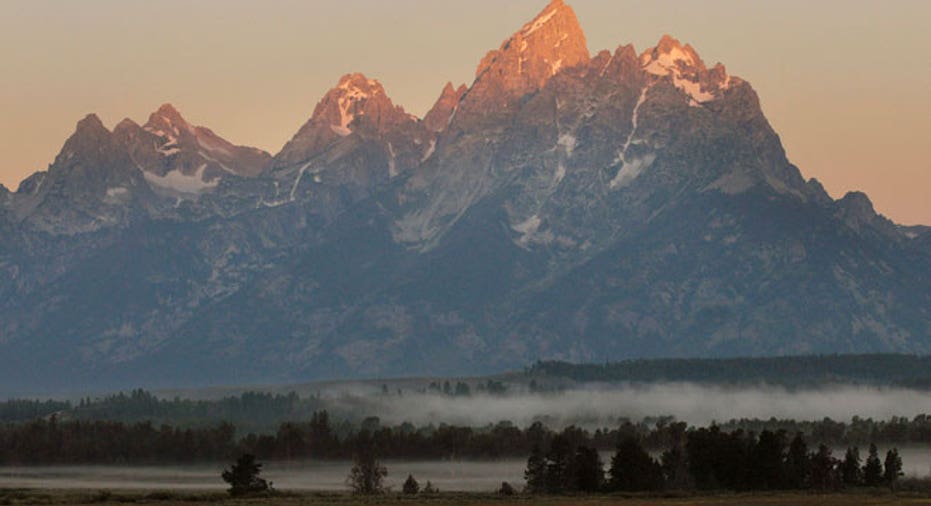Debate Over Role of Central Banks Expected in Jackson Hole

When the world’s top central bankers and economists gather around the campfire this week at their annual meeting in Jackson Hole, Wyo., chances are they won’t be singing kumbaya.
Instead, they’ll be lining up on either side of the growing debate over how large a role central banks should play in setting monetary policy.
The debate has been simmering in the U.S. for several years, ever since the U.S. Federal Reserve unleashed a series of unprecedented economic stimulus policies in an effort to stave off a full-on depression following the 2008 financial crisis.
The effort -- which included keeping interest rates at a near-zero range for over five years and pumping trillions of dollars into the economy through monthly purchases of U.S. Treasuries and mortgage-backed securities -- worked and the U.S. economy has gradually regained momentum. But not without serious potential consequences.
It’s those unintended consequences -- notably the potential for runaway inflation -- that will be at the center of debate in Jackson Hole.
“There is currently a divide within the Federal Reserve between a few policymakers who think that the Fed should try to prevent financial bubbles caused by rising asset prices and others who believe that the Fed should focus on achieving its goal of maximum employment, especially if wage and price inflation is still well contained,” Gary Thayer, chief macro strategist at Wells Fargo Advisors, said.
“This week’s Jackson Hole symposium may shed some light on what the Fed is likely to do as it tries to achieve its dual mandate,” Thayer added.
The theme of this year’s conference is “Re-evaluating Labor Market Dynamics,” an issue close to Fed Chair Janet Yellen’s heart.
Yellen is scheduled to speak Friday in her first appearance at Jackson Hole as Fed chair, and she is expected to offer another strong defense of long-term accommodative policies. Other speakers include Bank of Japan Governor Haruhiko Kuroda, Central Bank of Brazil Governor Alexandre Antonio Tombini and Bank of England Deputy Governor Ben Broadbent.
Back in March, in one of her first public speeches after replacing Ben Bernanke at the helm of the central bank, Yellen gave a speech in which she made clear her goal of using monetary policy to strengthen U.S. labor markets. With the Fed currently winding down its asset purchasing program known as quantitative easing, the main tool left for stimulating labor markets is low interest rates.
Yellen has repeatedly emphasized the importance of low interest rates in helping average Americans buy homes and cars, and in allowing businesses to borrow money cheaply so that they can expand and create jobs.
Jackson Hole Should Allow for Expanded Debate
The Yellen-led faction of the Fed, a.k.a the doves, have made no secret of their belief that interest rates should stay at their unprecedented lows until the U.S. economy is strong enough to withstand higher borrowing costs.
The hawks within the Fed -- Kansas City Fed President Esther George, Philadelphia Fed President Charles Plosser and Dallas Fed Chair Richard Fisher, to name a few -- are increasingly calling for the Fed to shift gears away from stimulus and start raising interest rates before runaway inflation sets in.
Many of the Fed hawks who are now calling for higher interest rates were skeptical of the central bank’s unprecedented interventions from the get go, citing their fears of unintended consequences. They now believe that the economy is ready for higher rates and that keeping them lower much longer could contribute to another harmful financial bubble and ultimately lead to runaway inflation.
But Yellen and her faction point to excessive “slack” in labor markets, which they define by the low labor force participation rate, stagnant wages and the proliferation of part-time and temporary jobs instead of fulltime jobs that provide adequate salaries and benefits.
What’s more, Yellen and the rest of the doves point out that inflation, while creeping higher in recent months, is still running well below the Fed’s target rate of 2%.
“The big question is whether there is enough slack in the labor markets to permit policy makers to continue to follow a low interest rate policy or whether the labor markets are getting tight, increasing the risk that inflation will increase if the Fed maintains its current low-interest rate policy too long,” Thayer said.
The most recent meetings of the policy-setting Federal Open Markets Committee have offered hints that point to the escalating debate between Fed doves and hawks. Doves want to keep interest rates low well into 2015 and possibly later, and hawks say rates should probably start moving higher early in 2015.
Jackson Hole should provide a forum for expanding the debate beyond the specific issue of interest rate hikes and into the larger realm of how much influence central banks should wield over national economies.